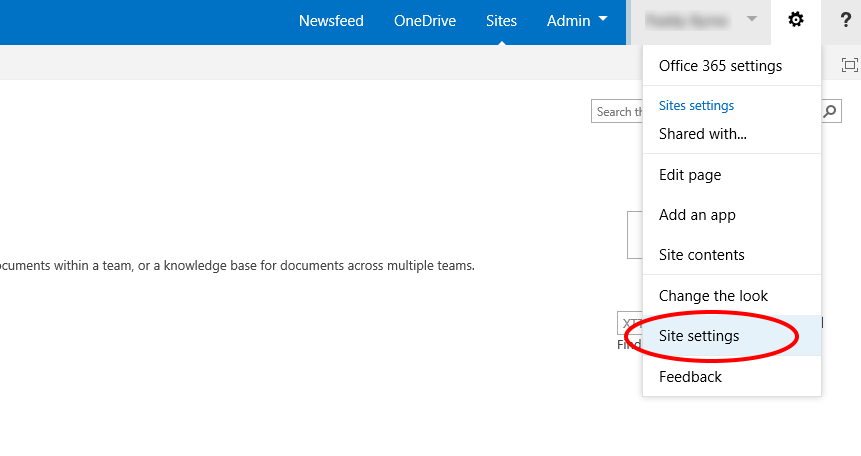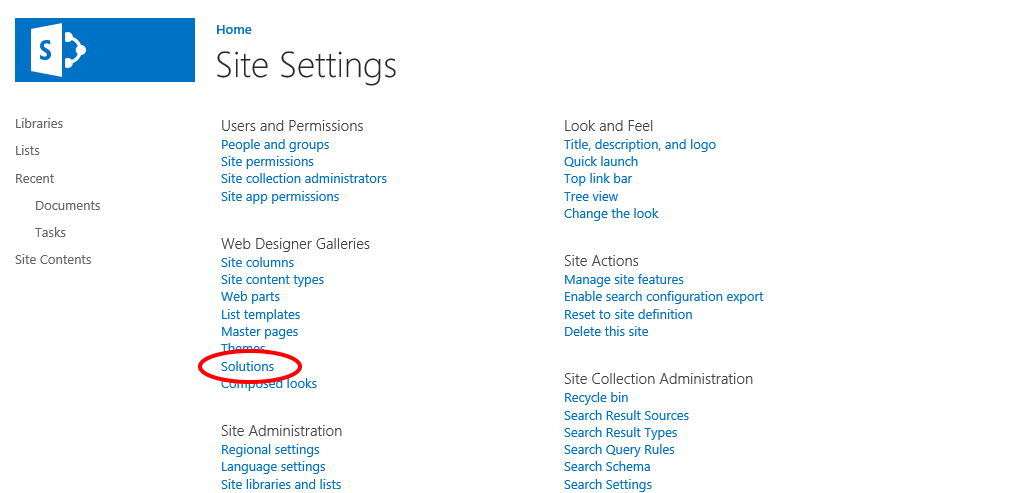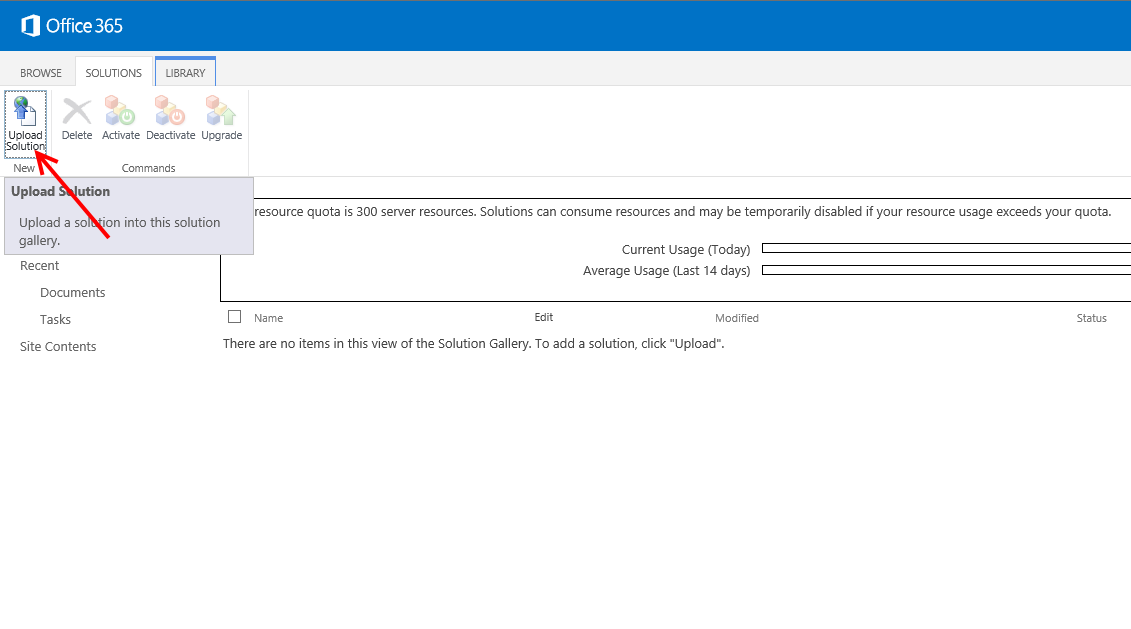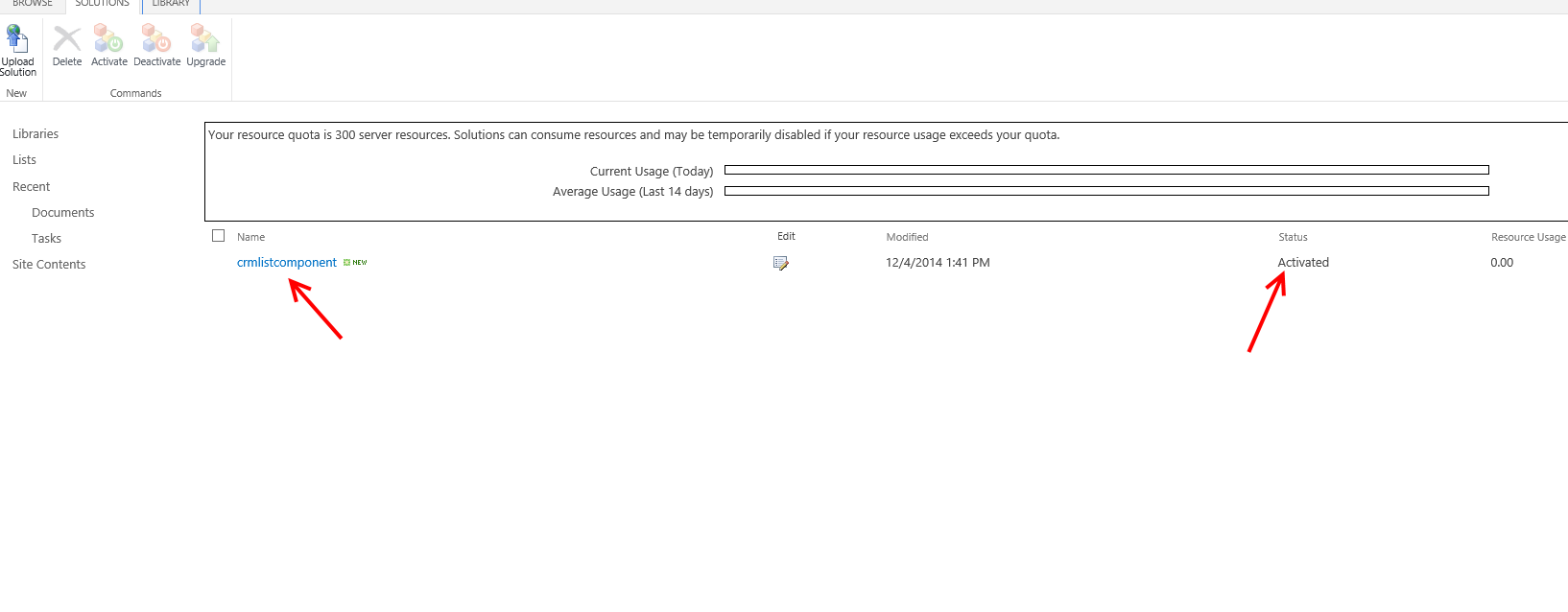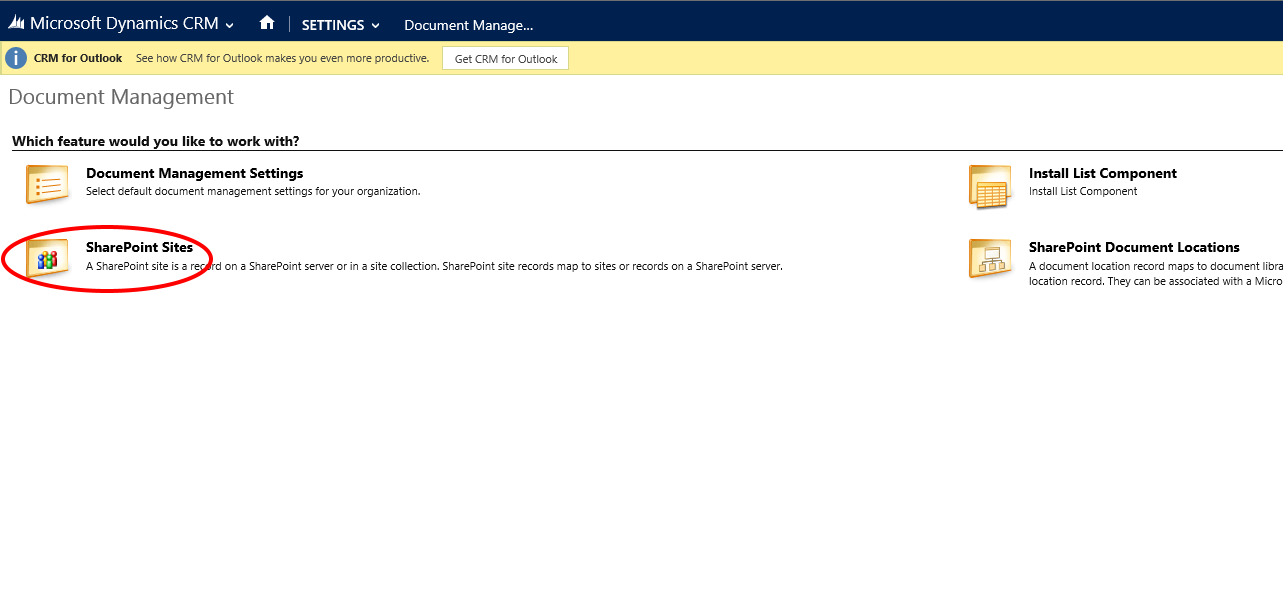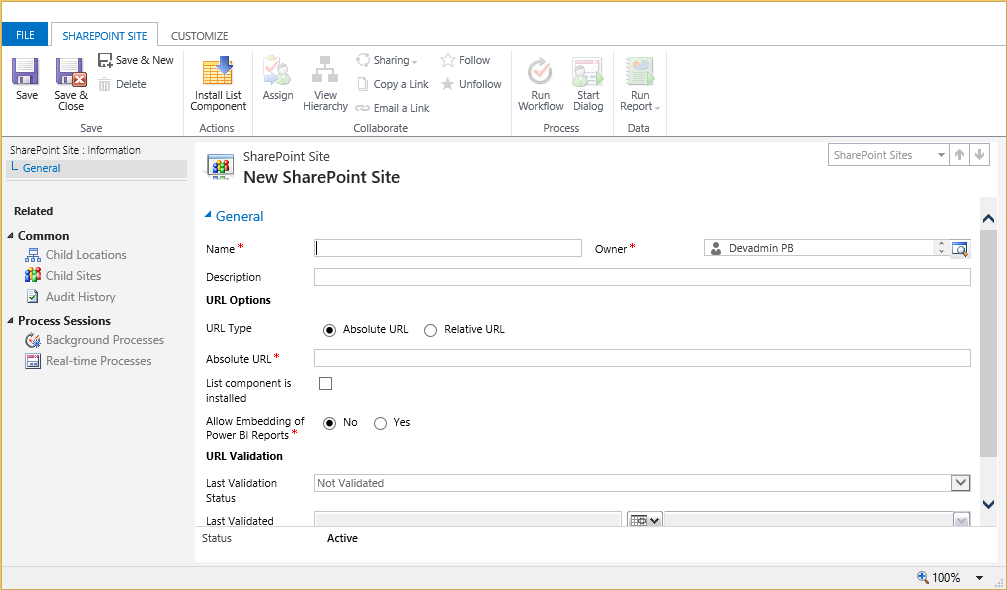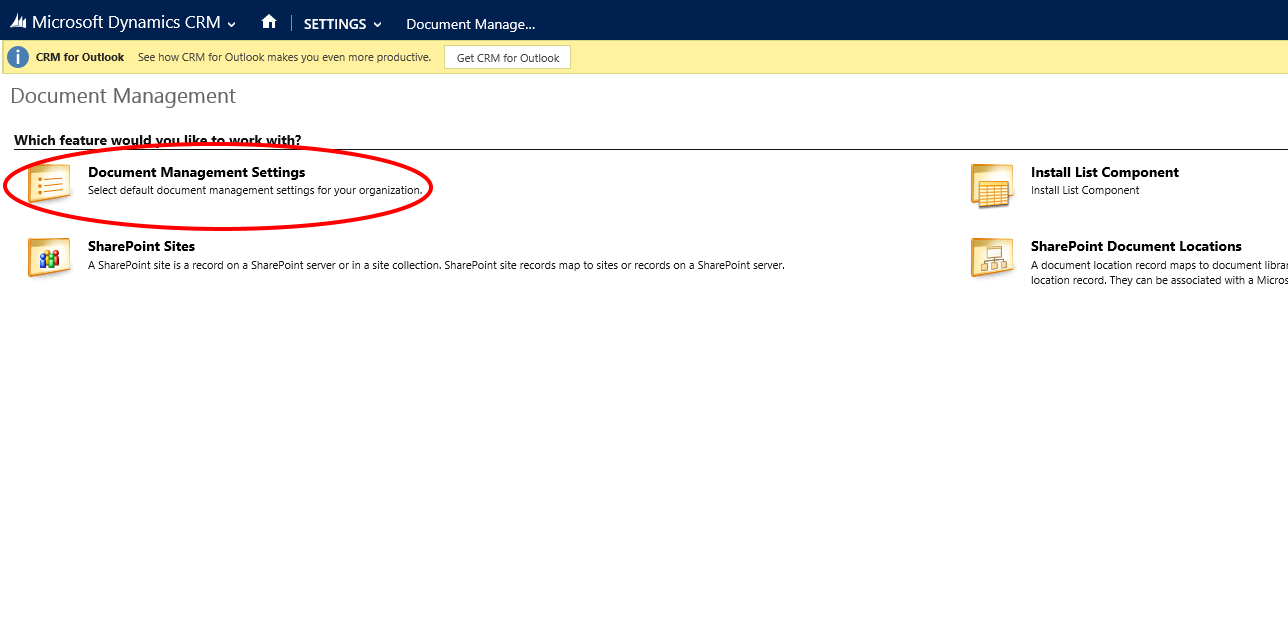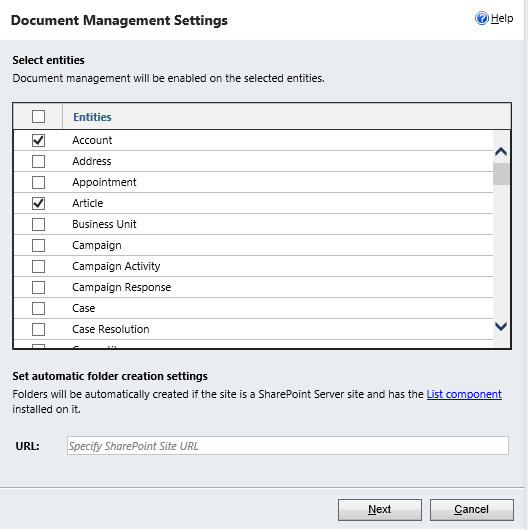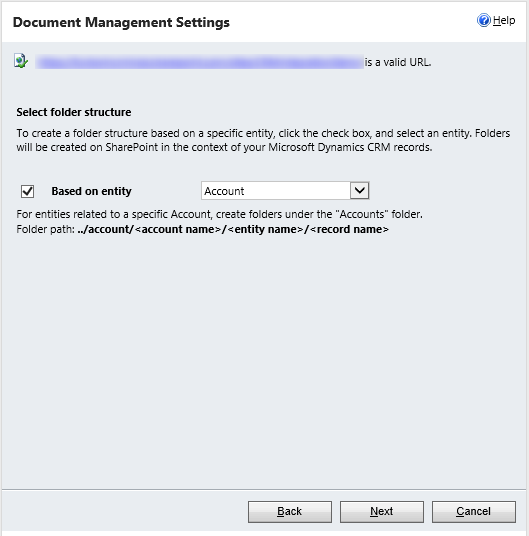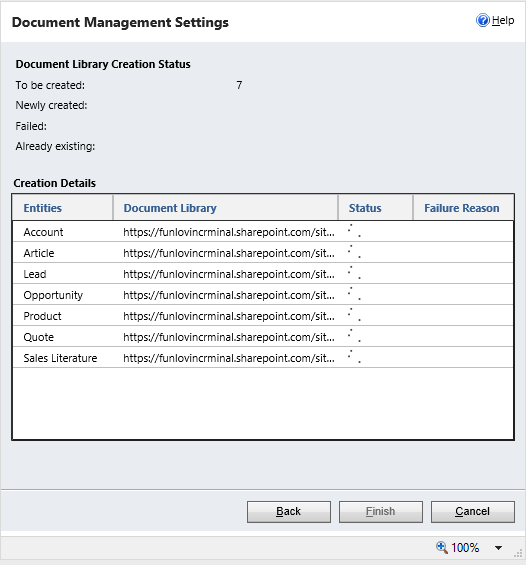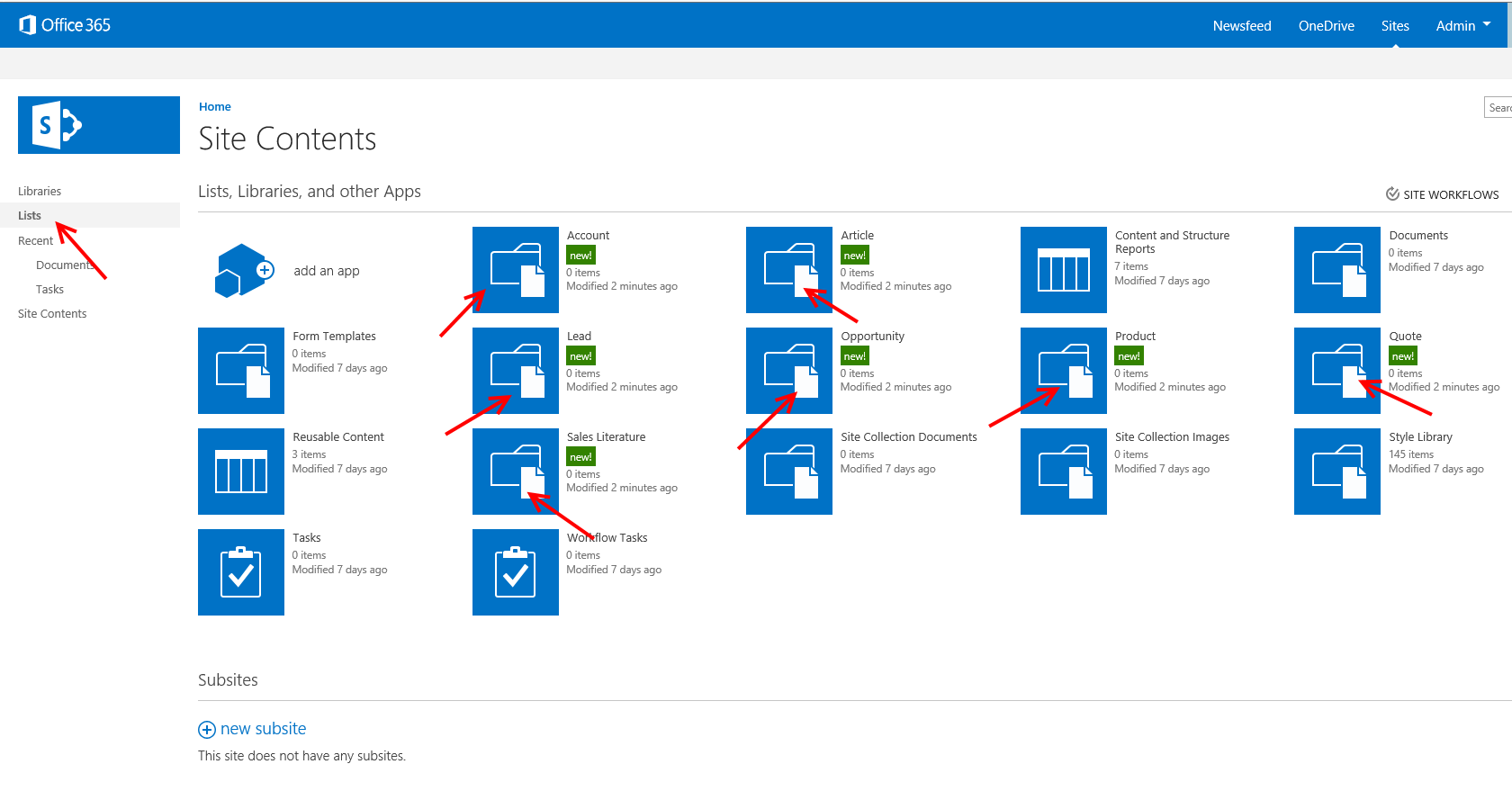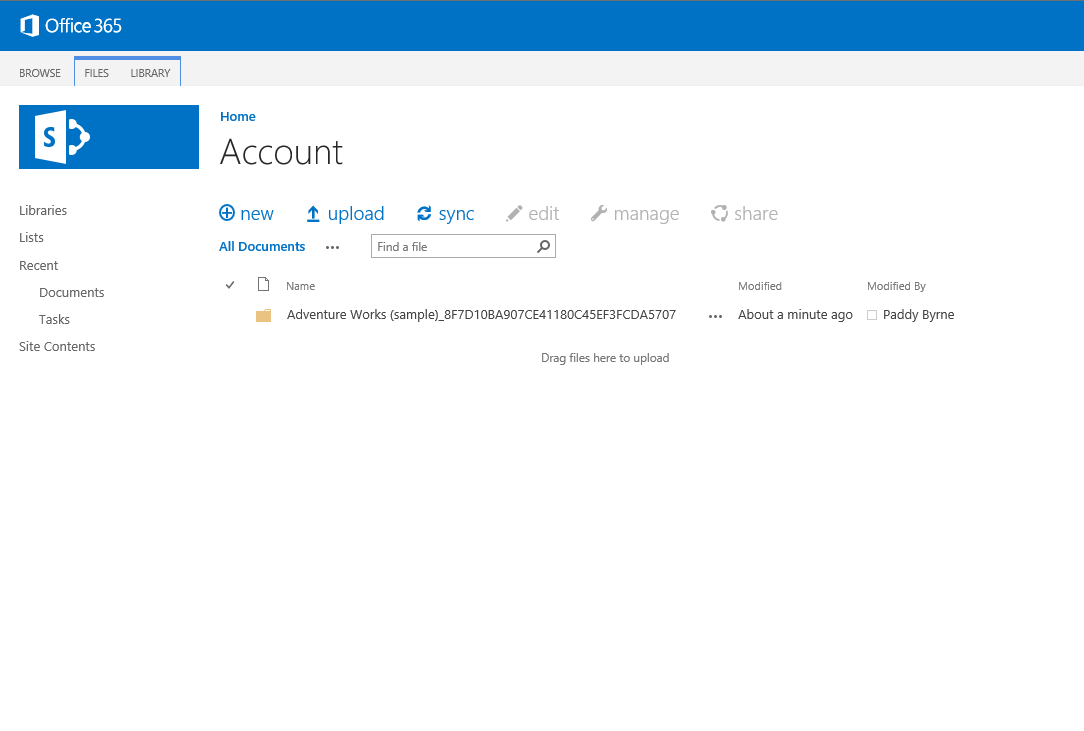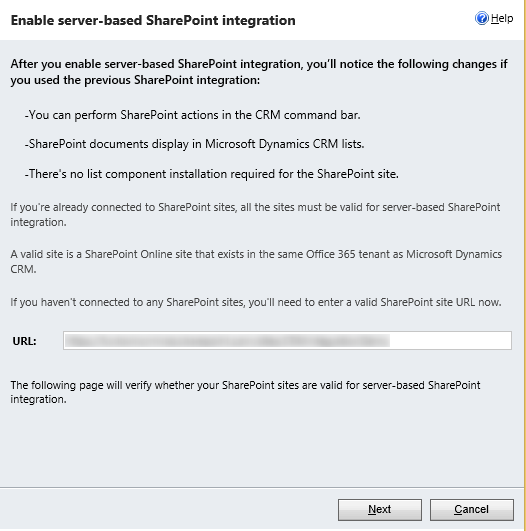The purpose of this article to provide a complete step by step process on how to integrate Microsoft Dynamics CRM with Microsoft SharePoint using the out-of-the-box configuration tools provided by Microsoft for both platforms.
The steps will guide you through setting up a collection in SharePoint and configuring both CRM on premises and online to connect with SharePoint.
Firstly, you’ll want to create a new collection in SharePoint to keep your files separate.
You start by logging into my Microsoft Online Services portal as an administrator. Then, by clicking on the Admin menu item at the top and selecting SharePoint in the drop down menu, you are taken to your SharePoint Admin Center.
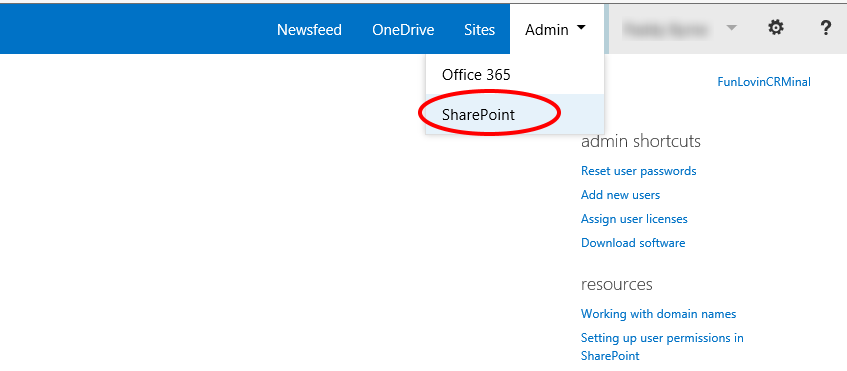
Clicking on the ‘New’ ribbon button will allow you to either create a new private site collection or create a new public website. You want to create a new private site collection so choose this option.
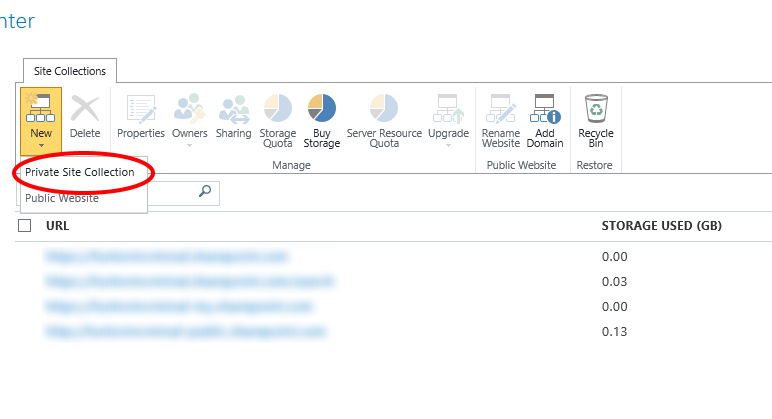
This will present you with a form in which you can specify basic properties of your new collection.
I’ve given the new site collection a title and web site address and I’m going to use the Document Centre template but you should choose a template which suits the purpose of your collection. I’ve chosen my local time zone and myself as the administrator. For storage quota I’ve chosen to enter 1024 MB and make 300 resources available in the Server Resource Quota field. Again, I’m using this collection for test / demo purposes only, you should choose values appropriate to what you’re using the collection for.
After completing the form and clicking OK, SharePoint will start creating the Collection. This can take approximately 15 minutes.
Once your collection is created you can click navigate to the URL you specified earlier to enter it.
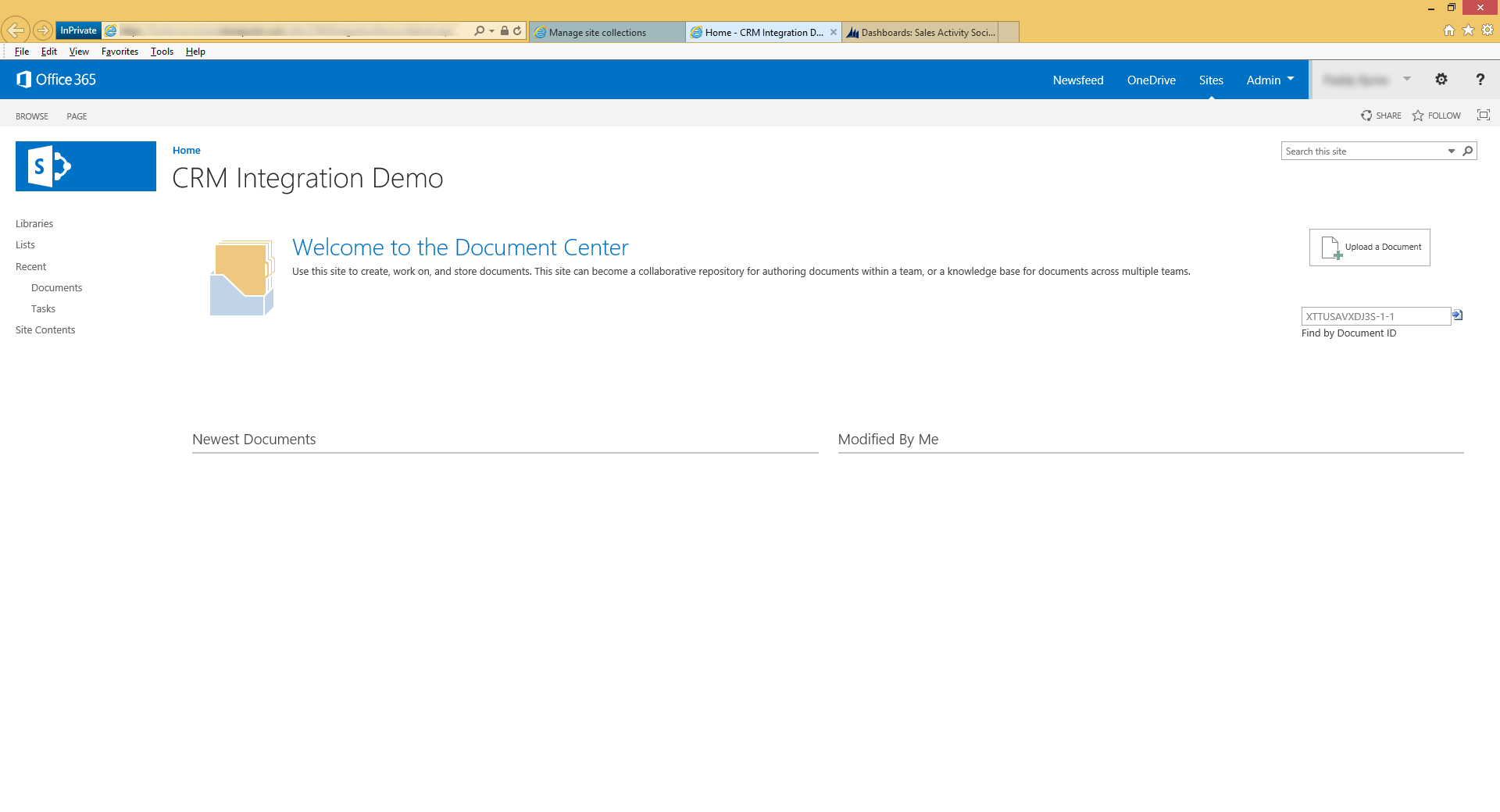
The steps taken to integrate CRM Online and CRM on-premise used to be the same but this changed in the Spring 2014 update when Microsoft introduced server-side synchronization which allowed seamless synchronisation between the two platforms as long as they both resided in the same Microsoft Online Services environment.
